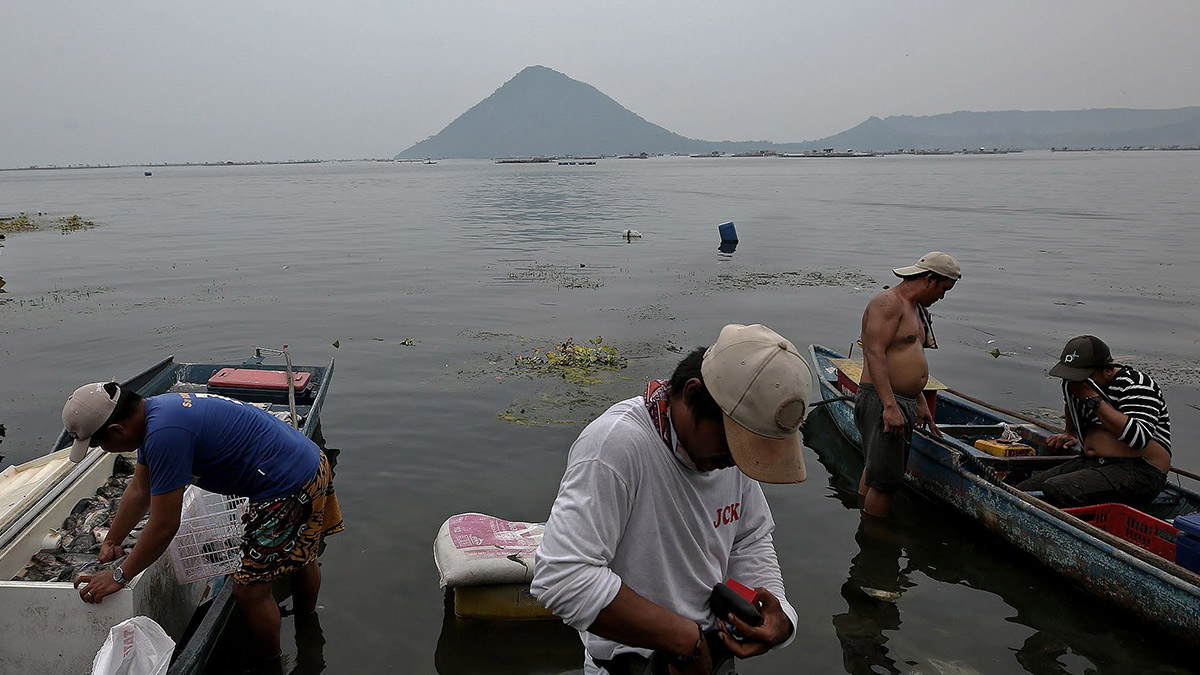
Residents go on their daily life amid volcanic smog or vog from Taal Volcano in Agoncillo, Batangas on August 19, 2024. (INQUIRER file photo / RICHARD A. REYES)
LUCENA CITY — Taal Volcano in Batangas province emitted more sulfur dioxide (SO2) on Saturday, August 31, causing the reappearance of volcanic smog or “vog.”
The Philippine Institute of Volcanology and Seismology (Phivolcs) reported in its latest bulletin issued on Sunday morning, September 1, that the volcano released a “voluminous emission” of 9,645 metric tons (MT) of SO2 from the volcano’s main crater in the past 24 hours.
The plumes rose to 2,400 meters above Taal Volcano Island, the volcano’s crater landmass, locally known as “Pulo,” that sits within Taal Lake, before drifting northwest.
The latest emission was a huge increase from the recorded 2,921 MT from August 26 to 28 and 4,389 MT logged on August 29 to 30.
Taal has emitted an average of 7,777 tons/day of SO2 for the year and has been continuously degassing voluminous concentrations since 2021.
Phivolcs again noted an “upwelling of hot volcanic fluids” in the main crater lake.
No earthquake was recorded during this latest monitoring period.
State volcanologists also observed the renewed presence of “vog” during this time after it disappeared on August 21.
The vog returned on August 26 but disappeared again the next day.
Vog is composed of SO2 gas. It can irritate the eyes, nose and throat. People with respiratory conditions and pregnant women are at greater risk.
Authorities warned the public of the harmful effects of prolonged exposure to volcanic SO, such as irritation of the eyes, throat and respiratory tract, especially among those who have underlying health conditions such as asthma, lung and heart diseases.
Elderly individuals, pregnant women and children are also vulnerable to volcanic sulfur dioxide.
People exposed to vog are advised to use face masks, drink plenty of water to ease the discomfort from exposure, and consult a doctor if needed.
On August 19 and 20, the presence of volcanic smog from Taal forced local government officials in some towns in Calabarzon (Cavite, Laguna, Batangas, Rizal, Quezon) to suspend classes in their localities.
According to Phivolcs, Taal Volcano is still on alert level 1 or a low level of volcanic unrest.
The agency reminded the public that the volcano remains in an “abnormal condition” and “should not be interpreted to have ceased unrest nor ceased the threat of eruptive activity.”